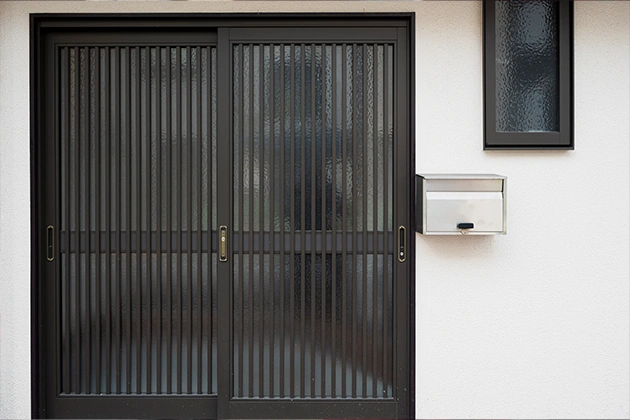In the world of architecture and construction, the materials chosen for a building’s design define not only its aesthetic but also its longevity and safety. Among the most dependable choices available today are steel doors. These are an ideal blend of strength, durability, and modern elegance. Once regarded primarily as industrial fixtures, these doors have evolved into a design staple across commercial, residential, and institutional spaces.
Why Steel Doors Are the Gold Standard for Security and Performance
Steel has long been associated with strength, but when shaped and engineered into doors, it delivers far more than simple toughness. Steel doors are resistant to warping, cracking, and swelling, ensuring they maintain their integrity even in extreme environmental conditions. Whether installed in a high-traffic office, a school, or a factory, they offer consistent performance year after year.
They also excel in security. The natural rigidity of steel makes it difficult to breach, providing superior protection compared to timber or composite alternatives. Many designs incorporate multi-point locking systems, internal reinforcements, and tamper-resistant hinges, offering peace of mind to building owners and occupants alike.
On top of that, steel doors can be fitted with fire-rated cores, helping to contain flames and smoke during an emergency. This makes them a vital component of any building’s fire safety strategy, blending functionality with lifesaving capability.
Aesthetic Versatility for Contemporary Design
One of the misconceptions about steel doors is that they are purely functional: plain, cold, or industrial. In reality, modern engineering has made them highly adaptable to a wide range of styles. From sleek powder-coated finishes to custom colours and embossed textures, they can be tailored to suit both traditional and ultra-modern settings.
Architects are increasingly using steel doors as visual anchors within their designs. A matte black steel door can add definition to a glass façade, while brushed or galvanised finishes complement minimalist interiors. Their clean lines and refined proportions make them suitable for offices, hotels, retail spaces, and even residential properties seeking a modern edge.
Sustainability and Longevity
Sustainability has become a non-negotiable part of today’s design philosophy, and steel doors fit perfectly within that framework. Steel is one of the most recyclable materials in the world, meaning that doors made from it can be repurposed multiple times without losing structural integrity.
This circular life cycle reduces waste and environmental impact. It’s a major consideration for architects and developers aiming for green certifications such as BREEAM or LEED. Furthermore, the exceptional lifespan of steel doors means fewer replacements over the years, minimising resource consumption and operational costs.
With proper insulation and high-performance seals, these doors also contribute to energy efficiency, helping to regulate indoor temperatures and reduce heating or cooling demands.
Precision Engineering and Customisation
Every building has unique requirements, from fire safety ratings to acoustic performance and thermal regulation. The adaptability of steel doors allows manufacturers to design solutions that meet these specific needs. Options include soundproofing layers for studios and hospitals, weather-sealed models for exterior entrances, and ballistic-rated variants for high-security facilities.
How Technology Is Elevating Steel Door Innovation
Advancements in materials science and smart building technology are taking steel doors to the next level. Many modern systems now integrate electronic locking mechanisms, card access systems, or biometric security, making them an essential part of intelligent building infrastructure.
Additionally, new finishes and coatings are improving corrosion resistance and visual durability. Anti-fingerprint surfaces, textured powder coatings, and UV-protective layers extend lifespan and maintain a door’s pristine appearance even in demanding conditions.
Manufacturers are also embracing automation. In high-traffic facilities such as airports or hospitals, steel doors can now be fitted with motion sensors and soft-close mechanisms, balancing accessibility with safety. This blend of function and technology reflects the continuing evolution of what was once considered a purely mechanical feature.
Beyond Function: Steel Doors as a Design Statement
The resurgence of industrial design aesthetics has helped steel regain its prominence in architecture. From converted warehouses to luxury offices, steel-framed elements are being celebrated for their raw honesty and strength. Steel doors, in particular, play a vital role in this visual narrative, symbolising security, craftsmanship, and timeless style.
Their minimal profiles and contemporary finishes allow designers to incorporate them seamlessly into open-plan layouts or contrast them with natural textures like timber and stone. In doing so, they bridge the gap between modern technology and enduring tradition.
The Long-Term Value of Choosing Steel
Choosing steel doors isn’t just a design preference; it’s a strategic investment. Their resilience against impact, weather, and wear translates into lower lifetime costs, fewer maintenance requirements, and a higher level of safety. In commercial environments, they also contribute to insurance compliance and building code adherence, adding measurable value beyond aesthetics.
Property owners and designers alike recognise that a door isn’t merely an entry point; it’s a line of defence, a design feature, and a symbol of care for those who use the building every day. Steel doors deliver on all three fronts.










